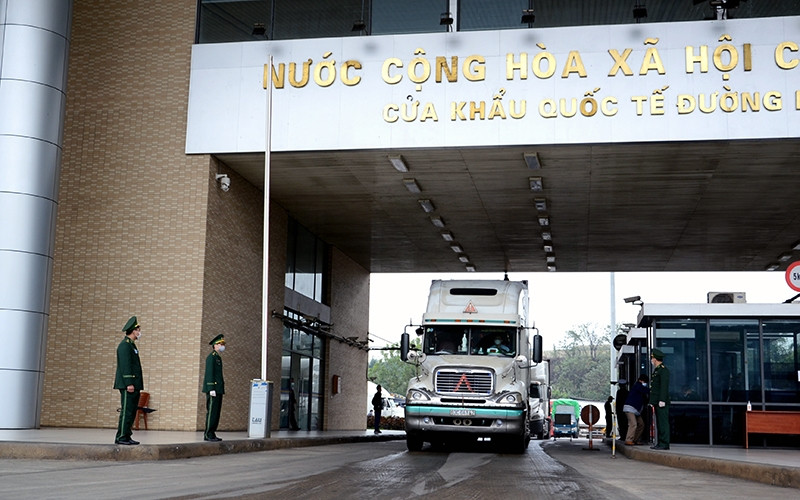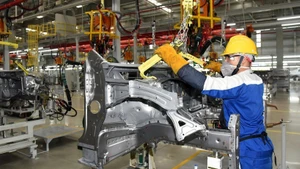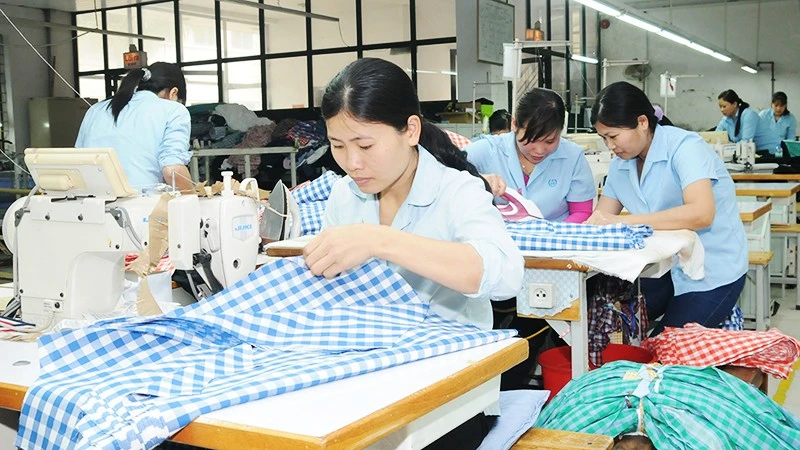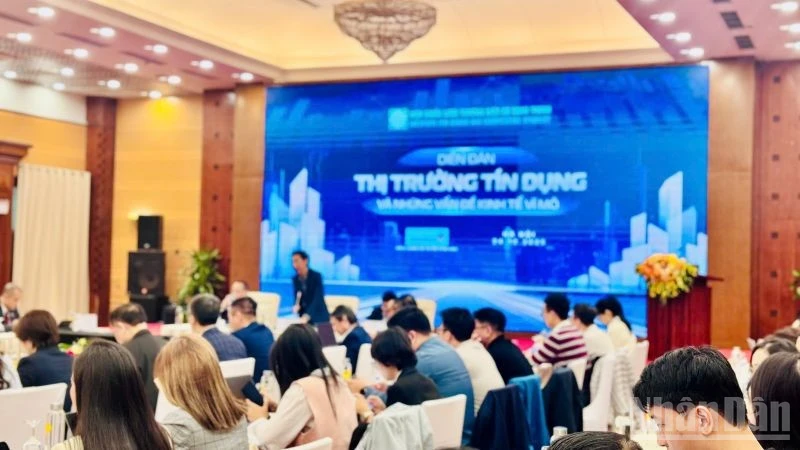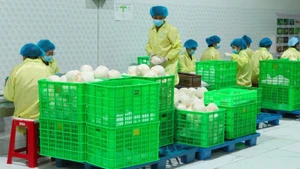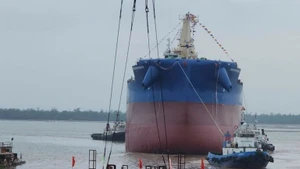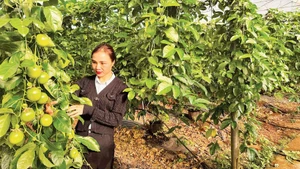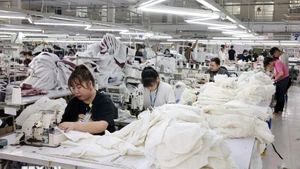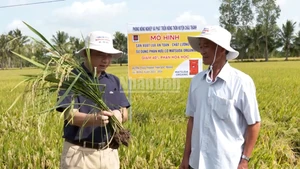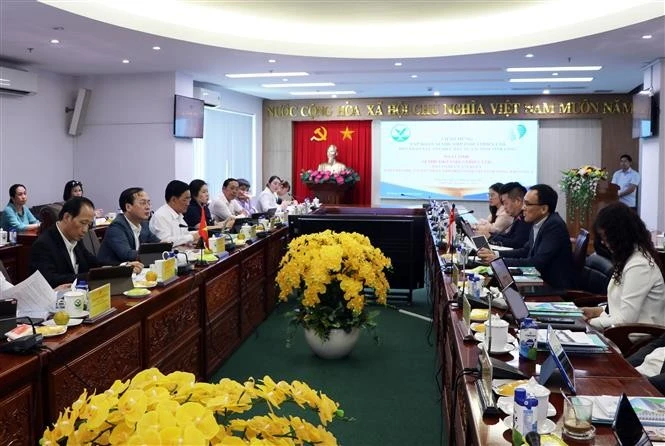Thousands of trucks waiting at border gates
Lang Son province is scheduled to receive vehicles carrying agricultural products for export starting March 15, after a temporary suspension on February 16. Meanwhile, the number of vehicles waiting to carry goods to border gate areas for export, tends to increase, averaging from 50 to 70 vehicles per day.
According to preliminary statistics, as of March 5, more than 1,400 vehicles, including 800 trucks carrying agricultural products, were stuck at four border gates in Lang Son. Particularly at Bao Nguyen waiting area, nearly 500 trucks are still waiting for customs clearance through Tan Thanh border gate. Therefore, Lang Son province has temporarily stopped receiving trucks carrying fresh fruit to border gates, until March 15.
Although four border gates in Lang Son province have been in active operation, the clearance capacity is very low, because the Chinese side continues to strictly implement measures to prevent and control the COVID-19 pandemic, such as conducting testing, the disinfection of goods and vehicles, and delivery methods with limited contact. At the same time, 100% of Vietnamese agricultural products exported to China must be inspected, so customs clearance efficiency is very low, with the average release of only 90-100 vehicles per day.
Hoang Khanh Duy, deputy head of the Management Board of Dong Dang Border Gate Economic Zone, based in Lang Son, said that the local authorities at Lang Son border gate must implement an unprecedented method of goods delivery, such as hourly and daily talks with the Chinese authorities, to speed up customs clearance. However, due to China’s “Zero Covid” policy and pandemic prevention and control measures, customs clearance efficiency is still very low, Duy noted.
In recent days, the congestion of vehicles is not only seen at the border gates in Vietnam but also in China. With the congestion of about 1,500 vehicles, the Chinese authorities have also continuously advised export enterprises, to proactively regulate their vehicles.
The Chinese side is still suspending customs clearance of agricultural products through border gates in Lao Cai and Quang Ninh provinces, thus, the number of agricultural products passing through Lang Son border gates, is forecasted to increase to an average of about 2,000 vehicles from March 15, leading to the congestion of goods.
Therefore, Lang Son is focusing on promoting solutions to both ensure safety against the pandemic and enhance the capacity of goods clearance.
Solving the root of the problem
According to Minister of Agriculture and Rural Development Le Minh Hoan, the congestion of agricultural products at the border gates, is mainly due to the short-term thinking of farmers, enterprises and authorities. It means that they only consider the business activities in each season and each deal without a long-term plan for the future. Thus, when they have problems, they blame the fastidious market, but don’t find a long-term solution to solve the root of the problem, Hoan stressed.
Besides, the current way of doing business is still vague and not professional or methodical, while many enterprises are very indifferent to the market issues.
To remove difficulties in customs clearance of goods, Lang Son province has established a working group to support export traders, by applying a new method of delivery and receipt of export goods. From February 26, truck drivers from other provinces will hand over the export goods to tractors and specialised drivers at the border gates, this force will also hand over containers of goods to the Chinese side, in the buffer zone of the border areas. The non-contact cabin models help increase safety in pandemic prevention and control, while also reducing total costs for enterprises.
However, according to some businesses, the pilot of the new delivery method has yet to receive the consensus of businesses, in addition to the embarrassment of the authorities working at border gates, making the new delivery method not yet effective.
Vice Chairman of Lang Son Provincial People's Committee Doan Thu Ha said that in the immediate future, it is necessary to continue and maintain the “green lanes and green areas”, to protect the border gates and control the pandemic, for people and goods. On the other hand, Lang Son province will actively discuss with the China’s Guangxi government, to study and soon agree on a suitable freight forwarding plan and mutual recognition of testing results.
However, the most important thing is to reorganise production to meet the standardisation needs of each market, such as China, the EU, and Japan, including even the domestic market. This is a radical solution and must be implemented to switch from unofficial export to export through official channels, according to Minister Le Minh Hoan. They must have a clear schedule and consistent action from state and local management agencies, as well as the participation of industry associations and export businesses, Hoan added.
Along with the efforts of the Government, ministries, departments and agencies, enterprises need to have a plan to proactively update policies on importing agricultural products of other countries and expand export to other markets, to avoid dependence on a single market. It is also necessary to promote domestic consumption and step-up processing, as well as restore a number of agricultural export activities, to reduce export pressure on border gates.
Vietnamese authorities need to negotiate with the General Department of Customs of China, to sign a protocol on plant quarantine for fruits that are about to be harvested, in order to reduce procedures and inspection time at border gates.
